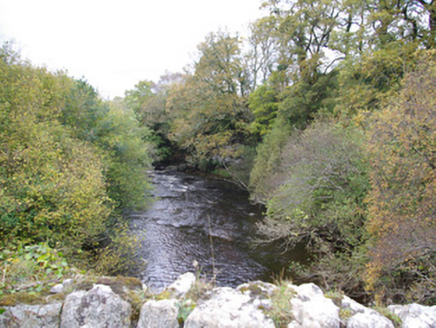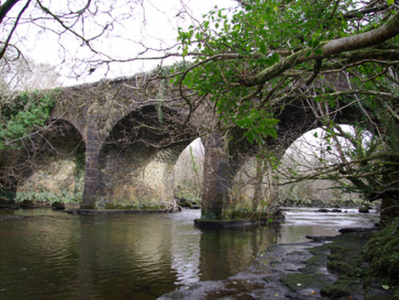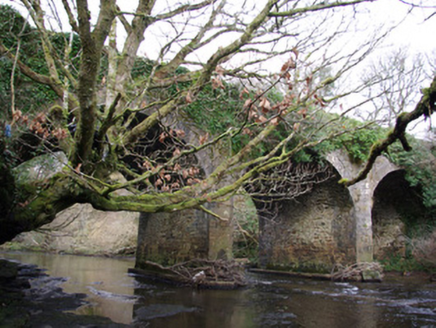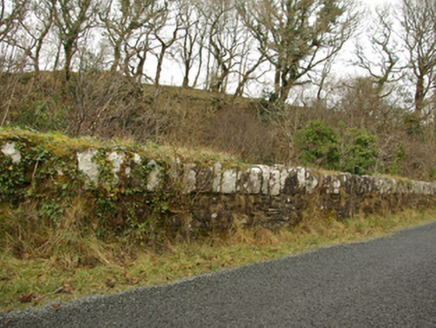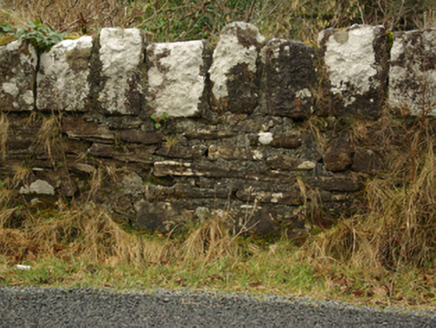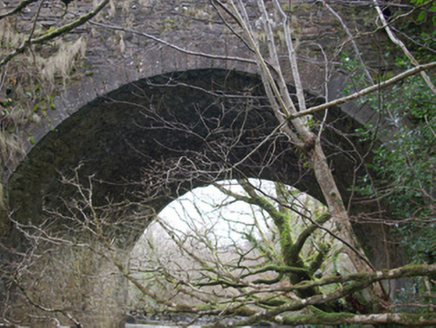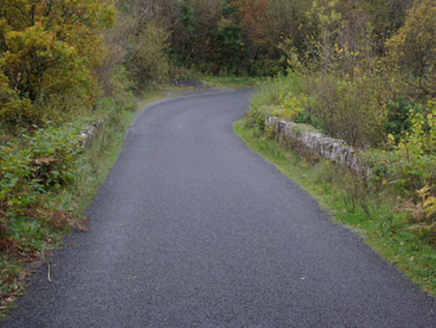Survey Data
Reg No
40909310
Rating
Regional
Categories of Special Interest
Architectural, Technical
Original Use
Bridge
In Use As
Bridge
Date
1780 - 1820
Coordinates
186328, 382231
Date Recorded
03/10/2007
Date Updated
--/--/--
Description
Triple-arch bridge carrying road over the Eanymore Water, built c. 1800, having V-profile dressed stone cutwaters to central piers. Wide segmental-headed arches having dressed ashlar voussoirs; squared rubble stone construction to arch barrels. Roughly coursed rubble stone construction to spandrels, piers and abutments. Roughly coursed rubble stone parapets having rubble stone coping. Side elevations now partially overgrown with vegetation. Tarmacadam deck with grass verges. Located in the rural landscape to the north-east of Frosses and to the north of Mountcharles.
Appraisal
This impressive triple-arched road bridge retains its early character and form, and is an appealing feature in the rural landscape to the north of Frosses. It is robustly-constructed using squared local rubble stone masonry, and its continued survival and use along a stands as testament to the quality of its original construction, and of the skill of the masons involved. This fine bridge is notable for the wide spans of the arches, the thin central piers and its height above the river, which all make this a structure of some engineering and technical achievement, as well as created a visually appealing composition. The good quality dressed stone voussoirs to the arches and the ashlar construction to the cutwaters are of a high standard, which helps to elevate this bridge above many of similar-scaled bridges in Donegal. This bridge probably originally dates to the late-eighteenth century or the first decades of the nineteenth century, a period that saw a great deal of road and bridge-building throughout Ireland, particularly by the Grand Juries (the forerunners of the County Councils). This notable bridge is one of a number of impressive bridges over the Eanybeg Water and the Eanymore Water in this area, and is an integral element of the built heritage and transport history of the local area.
